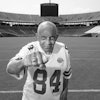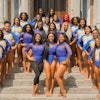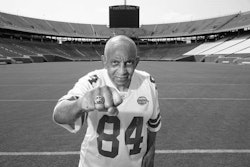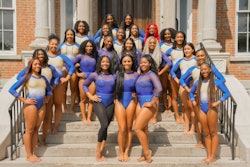JACKSON, Miss. — Years before Jackie Slater was a Hall of Fame offensive lineman, he was playing for Wingfield High School in Jackson, Mississippi, and hoping to attract the attention of college scouts.
This was in the early 1970s — about the time Southeastern Conference football teams were just beginning to recruit Black players — so this massive teenager was mostly ignored by the big schools. But Jackson State welcomed him.
“It was where I was wanted,” Slater recalled. “And it’s where I could excel.”
Slater was one of many players who thrived at the nation’s historically Black colleges and universities, particularly from the ’60s through the ’80s. NFL superstars Jerry Rice and Walter Payton were part of that wave.
But HBCUs have slowly turned into an afterthought on the college football landscape.
For the first time in the NFL’s common draft era, which started in 1967, not one player from the Southwestern Athletic Conference or Mid-Eastern Athletic Conference was selected this month. The two conferences combined to produce at least 20 NFL draft picks every year from 1967 to 1976, according to research by STATS. That output has slowly declined since.
Now storied programs like Grambling, Southern, Florida A&M and Mississippi Valley State are known more for crumbling facilities, player boycotts and struggles to meet NCAA academic standards than for what happens on the field.
College sports revenue and spending have become increasingly unequal over the past three decades, and HBCUs have hard time keeping up.
The lack of money is especially pronounced for schools in the SWAC, which have yearly athletic budgets as low as Mississippi Valley State’s $3.6 million.
That’s about half the salary coach Nick Saban earns at Alabama, where the school’s total athletic budget is well over $100 million. Even other Football Championship Subdivision schools have athletic budgets twice as large as many as those at HBCUs.
Like his late brother Walter, Eddie Payton played football at Jackson State, where he is now the golf coach.
Payton says bringing HBCUs back to some level of prominence is possible, but it will be difficult. As TV contracts for college football have grown, the bigger schools have been able to pour money into facilities and programs that make it nearly impossible for HBCUs to compete for elite athletes. And, as recruiting has grown more sophisticated, schools from around the country have been taking star football players out of the South, the main talent base for the HBCUs.
“It’s not that we’re getting less money — it’s that everybody else is growing while we’ve basically stayed the same,” Payton said. “We haven’t cultivated our fan bases and now the quality has gone down. It’s going to be hard to get those people back.”
Payton traced the SWAC’s downfall back to the 1980s and 1990s, when programs started playing “Classic” games on the road in places like Chicago and Indianapolis. Payton said in an effort to spread the HBCU brand and earn a little extra money, leaders focused too much on the schools’ popular marching bands and the parties surrounding the games instead of the football.
“When you go to a steakhouse, the thing that makes or breaks your meal is the steak,” Payton said. “It’s not the salad or the baked potato. We haven’t been focusing on the most important issue — and that’s the quality of the football.”
But the lack of money makes it hard to compete on and off the field.
Shoddy facilities at Grambling led to last fall’s player boycott. Mississippi Valley State’s football stadium was deemed so unsafe it was temporarily closed in 2010 and the team had to play at a high school 45 miles away while repairs were made.
Five of the SWAC’s 10 football schools were recently declared ineligible for the NCAA’s postseason after failing to meet Academic Progress Rate requirements.
Schools like Alabama and Texas have sprawling academic facilities with dozens of tutors and advisers committed to helping athletes stay eligible. Athletes at most HBCUs don’t have the same support. Teams in big conferences fly charters to games while HBCUs still take long interstate bus rides.
But officials at HBCUs say things can improve quickly.
HBCUs still attract the biggest crowds at the FCS level. The SWAC has led the division in attendance 35 times in 36 years, drawing more than 12,000 per game last season.
A little extra money for the academic side can help. Jackson State had APR problems a few years ago, but has recovered in part because of a $900,000 grant from the NCAA. The funds were part of $4.3 million the NCAA has spread to six schools to help boost APR performance.
SWAC Commissioner Duer Sharp said he hopes it’s the beginning of leaguewide improvement that can start in the classroom and carry over to the field.
“Our goal is to be a progressive Division I conference,” Sharp said. “Jackson State is a perfect example of how these problems can be turned around. They worked along with the NCAA, got some grant money and now have improved tremendously.”



















